Who Was The Sapa Inca?
A. Sutherland - AncientPages.com - Who was the Sapa Inca?
The ruler of the Inca people, known as the Sapa Inca, held a unique and significant position. The "only emperor" title in Quechua signifies his unparalleled role as the sole Inca ruler.
Painting of Manco Cápac - Sapa Inca of the Kingdom of Cusco - 18th century Cusco School. Unknown source - Public Domain
Why did he play such an essential role in the Inca Empire?
The Inca conquest of the northern kingdom of Chimú (Chimor), which began circa 1470, had a significant and far-reaching impact on the Inca’s government and society. The Sapa Inca's political power significantly increased, altering the balance of power in the region.
This conquest focused on the coastal regions of northern Peru and Ecuador and was of great importance in Inca history. The assimilation of Chimú territories and cultural practices into the Inca Empire largely modified and strengthened Inca society.
Chimu was a remarkable society, and the splendor and wealth of the lord of this northern kingdom, his nobles, and the court were impressive. The wealth displayed by the Chimu elites was admired, and the Inca desired to emulate everything that could strengthen their empire.
Due to his divine lineage, the Sapa Inca was revered as a sacred figure during his lifetime. As a direct descendant of the solar deity Inti, he was considered one of his progeny.
Inca Roca, Sixth Sapa Inca, 1 of 14 Portraits of Inca Kings. Online collection of Brooklyn Museum. Public Domain
A Sapa Inca was polygamous, meaning he could have many wives. He wore a hat made of gold and feathers, clothes covered in jewels, and huge gold earrings. He wore an outfit once; after that, it was burned. The deceased Sapa Inca was mummified and kept in his palace.
His divine connection was significant during his reign and after his death. His mummified remains became one of the most sacred objects in the empire, leading to the creation of the imperial ancestor cult, which revered him as a divine entity.
The Sapa Inca, who held unquestionable authority over the Inca Empire, occupied the top of the social hierarchy. His rule extended to all aspects of governance and ownership, symbolizing his complete control over the empire.
While he held the position of commander-in-chief and was theoretically the principal field general, his direct involvement in military operations decreased as the empire expanded. Instead, he delegated field command to generals and officers, often individuals with close familial ties to him. This transition in his military role evolved to respond to the growing complexity of the empire's military affairs.
The Sapa Inca And Social Order
The Incan social order was well-organized. The empire's social hierarchy system was strict, one can say, even harsh, but it made for a stable society. People knew what was expected.
Portrait of Atahualpa, the last Inca Emperor. Ethnological Museum of Berlin, Germany - Public Domain
Inca’s military personnel included generals, officers, and ethnic leaders of combat units. The Sapa Inca had a personal guard known as the ‘orejones’ (in Spanish: "large ears.") The Orejones elite group was primarily composed of members from the Cuzco aristocracy.
As the ‘only emperor’ or ‘unique Inca,’ he had divine right over the people in all the villages in the empire. He was at the top of the social order. Below him were the four Prefects (Apu), each administering a quarter of the empire. They made up the Sapa Inca’s Supreme Council. Under them were the provincial governors, the Tocricoc Apu, who lived in the outlying capitals and acted as government administrators and judges. Then came native rulers of tribes or villages, the so-called ‘curacao,’ and the ‘canyon’ (leaders of a district or community within a town).
He was both a religious and political figure and according to the Incas, politics, and religion were intertwined. The Inca considered their ruler, the Sapa Inca, divine. Some reportedly had up to a hundred children. Upon death, a favored son succeeded him, not necessarily the eldest.
Statue of the ninth Sapa Inca, Pachacutiq, Machupicchu Pueblo in Peru. Image credit. Elemaki - CC BY 2.5
The first Sapa Inca was Manco Capac. The son of the sun god Inti, Manco Capac established the Inca dynasty and assumed the title of Capac, which may be interpreted as "King" in modern terms. While he remains a semi-mythical figure whose actual time period cannot be clearly pinpointed, he is regarded as an Inca hero and many ancient legends connect Manco Cápac to the foundation of Cuzco.
Interestingly, Inca Roca, the sixth monarch in the Inca lineage, is believed to have been the first ruler to officially adopt the title of Sapa Inca, which translates to "Emperor."
The ninth Sapa Inca, Pachacuti (1418–1471/1472), defeated the Chanca (Chanka), a Quechua ethnic people living in the regions of Ayacucho, Apurímac, and Lamas of Peru. This victory made the Inca Empire powerful during his reign.
The last effective Sapa Inca of the Inca Empire was Atahualpa executed by Francisco Pizarro, a Spanish conquistador who led an expedition that conquered the Inca Empire. However, several successors later claimed the title.
Written by – A. Sutherland - AncientPages.com Senior Staff Writer
Copyright © AncientPages.com All rights reserved. This material may not be published, broadcast, rewritten or redistributed in whole or part without thexpress written permission of AncientPages.com
Expand for referencesReferences:
de Gamboa, Pedro Sarmiento. ‘History of the Incas’
Hanke L. History of Latin American Civilization Vol.1
More From Ancient Pages
-
 Neanderthals Vanishing When Homo Sapiens Emerged In Europe Was Coincidental – Are Herbivores The Answer?
Evolution | Sep 29, 2023
Neanderthals Vanishing When Homo Sapiens Emerged In Europe Was Coincidental – Are Herbivores The Answer?
Evolution | Sep 29, 2023 -
 Legendary Sea Monster Exists: Icelandic Government Commission Says
Featured Stories | Sep 27, 2014
Legendary Sea Monster Exists: Icelandic Government Commission Says
Featured Stories | Sep 27, 2014 -
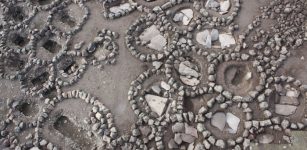 Vast Paleogenetic Study Reveals Insights On Migration, Farming And Language Development Across The Southern Arc
Archaeology | Aug 26, 2022
Vast Paleogenetic Study Reveals Insights On Migration, Farming And Language Development Across The Southern Arc
Archaeology | Aug 26, 2022 -
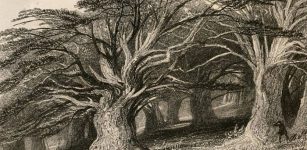 Yew: Mysterious Ominous And Sacred Tree Revered By Our Ancestors Since The Dawn Of Civilization
Featured Stories | Feb 8, 2022
Yew: Mysterious Ominous And Sacred Tree Revered By Our Ancestors Since The Dawn Of Civilization
Featured Stories | Feb 8, 2022 -
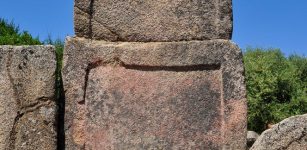 Mystery Of The Giants’ Grave of Coddu Vecchiu
Featured Stories | Jun 27, 2015
Mystery Of The Giants’ Grave of Coddu Vecchiu
Featured Stories | Jun 27, 2015 -
 Was Tintagel Castle A Fortress Used By Iconic Hero King Arthur?
Ancient Mysteries | Mar 12, 2016
Was Tintagel Castle A Fortress Used By Iconic Hero King Arthur?
Ancient Mysteries | Mar 12, 2016 -
 Understanding The Green Sahara’s Collapse
Earth Changes | Aug 22, 2024
Understanding The Green Sahara’s Collapse
Earth Changes | Aug 22, 2024 -
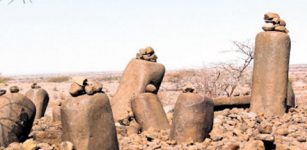 Namoratunga: ‘People Of Stone’ And Ancient Astronomical Observatory
Featured Stories | Jun 12, 2016
Namoratunga: ‘People Of Stone’ And Ancient Astronomical Observatory
Featured Stories | Jun 12, 2016 -
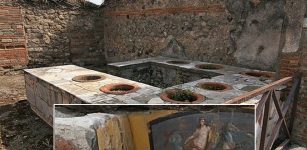 Another 2,000-Year-Old ‘Snack Bar’ Discovered In Pompeii
Archaeology | Apr 10, 2019
Another 2,000-Year-Old ‘Snack Bar’ Discovered In Pompeii
Archaeology | Apr 10, 2019 -
 Cuchulainn: Irish Mythical Hero And His Cruel Magical Spear Gae Bolg
Celtic Mythology | Jun 6, 2017
Cuchulainn: Irish Mythical Hero And His Cruel Magical Spear Gae Bolg
Celtic Mythology | Jun 6, 2017 -
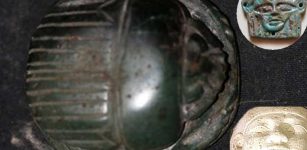 Amulets, Figurines Discovered In Recently Unearthed Limestone Sarcophagus In Minya, Egypt
Archaeology | Oct 15, 2020
Amulets, Figurines Discovered In Recently Unearthed Limestone Sarcophagus In Minya, Egypt
Archaeology | Oct 15, 2020 -
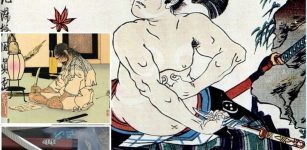 Seppuku: Ancient Suicide Ritual That Guaranteed Honorable Death Instead For Life In Shame
Ancient Traditions And Customs | Mar 8, 2018
Seppuku: Ancient Suicide Ritual That Guaranteed Honorable Death Instead For Life In Shame
Ancient Traditions And Customs | Mar 8, 2018 -
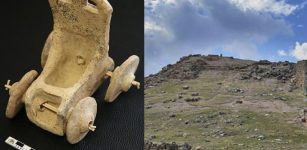 Ancient City Of Sogmatar And Recent Discovery Of 5,000-Year-Old Children’s Toy
Archaeology | Oct 6, 2017
Ancient City Of Sogmatar And Recent Discovery Of 5,000-Year-Old Children’s Toy
Archaeology | Oct 6, 2017 -
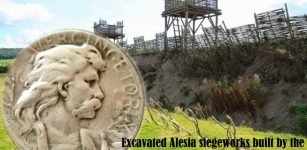 Siege Of Alesia: Last Decisive Battle That Ended Gallic Independence In France And Belgium
Featured Stories | Feb 1, 2017
Siege Of Alesia: Last Decisive Battle That Ended Gallic Independence In France And Belgium
Featured Stories | Feb 1, 2017 -
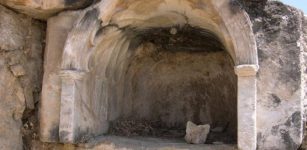 Plutonium: Dangerous Pluto’s Gate Was An Ancient Gateway To Hell At Hierapolis That Was Real
Featured Stories | Feb 18, 2017
Plutonium: Dangerous Pluto’s Gate Was An Ancient Gateway To Hell At Hierapolis That Was Real
Featured Stories | Feb 18, 2017 -
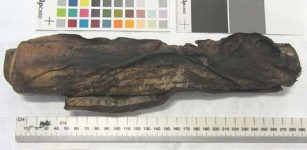 Hidden Text Discovered Inside Ancient Scroll
Archaeology | Oct 5, 2018
Hidden Text Discovered Inside Ancient Scroll
Archaeology | Oct 5, 2018 -
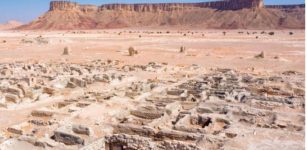 Unknown 8,000-Year-Old Human Settlement With A Rock-Cut Temple, Altar And Inscriptions Discovered In Al-Faw, Saudi Arabia
Archaeology | Aug 3, 2022
Unknown 8,000-Year-Old Human Settlement With A Rock-Cut Temple, Altar And Inscriptions Discovered In Al-Faw, Saudi Arabia
Archaeology | Aug 3, 2022 -
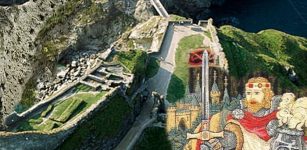 Was Tintagel Castle A Fortress Used By Iconic Hero King Arthur?
Featured Stories | Jul 12, 2022
Was Tintagel Castle A Fortress Used By Iconic Hero King Arthur?
Featured Stories | Jul 12, 2022 -
 Ancient DNA Analysis Shows How The Rise And Fall Of The Roman Empire Shifted Populations In The Balkans
DNA | Dec 8, 2023
Ancient DNA Analysis Shows How The Rise And Fall Of The Roman Empire Shifted Populations In The Balkans
DNA | Dec 8, 2023 -
 Tombs Rich In Artifacts Discovered By Swedish Expedition In Cyprus
Archaeology | Jul 6, 2023
Tombs Rich In Artifacts Discovered By Swedish Expedition In Cyprus
Archaeology | Jul 6, 2023




